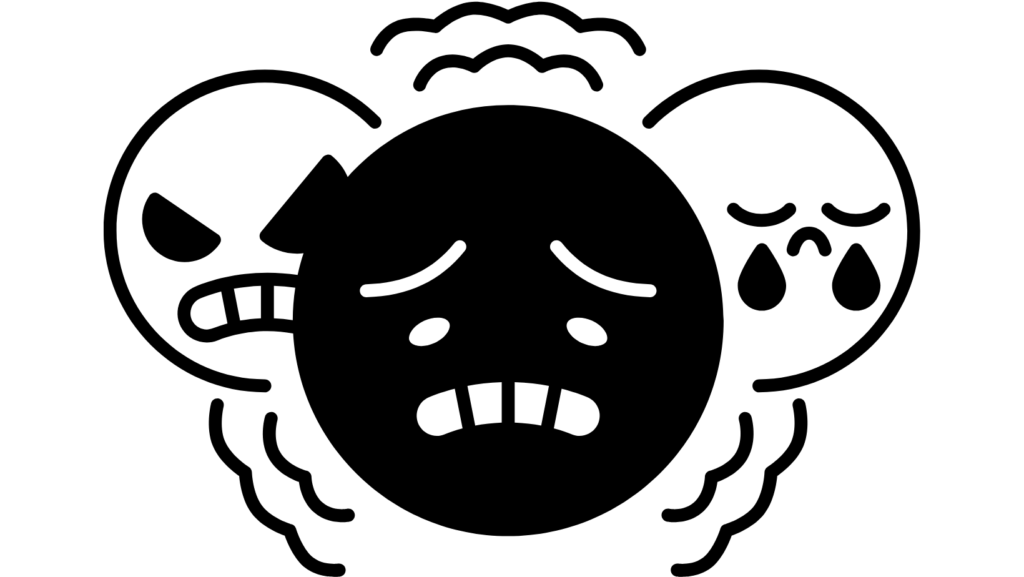Trauma is much more than a searing event. It represents the lasting impact that a shock leaves on a person, often long after the event has passed. In the face of trauma, our bodies go into survival mode, activating flight, fight or, as a last resort, freeze responses. But it's not just the severity of the event that determines the trauma, it's also our ability to cope and regain our balance. This article explores how trauma manifests itself in the body and presents powerful tools to help release these imprints.
What is trauma?
Trauma is the significant event, while trauma represents its consequences for the individual. It's not just a question of the severity of the event, but also of the individual's ability to cope with it and regain a state of equilibrium.
When the brain perceives danger, whether real or imagined, a series of reactions are triggered in the body: the heart rate increases and the hormonal system is activated. The body's first reflex is to flee. If escape is impossible and there is no co-regulation (outside help to calm the situation), anger and the fight system take over. If the person can neither flee nor fight, and there is still no co-regulation, they find themselves trapped in an inner conflict between their fears and their needs, as well as those of others. This is where the body can enter a state of immobility or feigned death, where the aggressed no longer reacts, as if simply waiting for the situation to end. This mechanism is a survival strategy that the brain puts in place to protect us.
Co-regulation is essential to soothe these traumatic reactions. This happens when another person becomes a security figure and helps to regulate the emotional state. This process is often at the heart of therapeutic work, in coaching or psychosensory-motor support, but can also be found in everyday relationships, such as those with a partner or friend.
In short, trauma can result from an event that is too intense or from the absence of what should have been present, as in the case of negligence.

Trauma in the body.
Trauma, whether emotional, psychological or physical, can have a profound impact on the body. During a trauma, the body activates a stress response (release of cortisol and adrenaline) which, if it persists, leads to chronic stress, affecting the nervous, digestive and immune systems.
This continuous activation can cause muscular tension, physical pain (somatisation) and hormonal imbalances, particularly menstrual disorders in women. The body may also ‘remember’ the trauma through pain or physical sensations linked to the traumatic event.
Trauma can disrupt sleep, with recurrent insomnia or nightmares, and cause chronic inflammation that weakens the immune system, increasing the risk of disease. In addition, brain structures such as the amygdala and hippocampus can be altered, affecting emotional regulation and memory. These changes can make a person more susceptible to anxiety, depression and other mood disorders.

Turn your body into an ally
Releasing trauma often requires work that involves both the body and the mind, because trauma profoundly affects both these aspects of our being.
To begin with, somatic exercises are essential for reconnecting with physical sensations. They help the body to release tensions and blockages accumulated after a shock. Simple somatic practices, such as touching, yawning, sighing or shaking, help to release these internal tensions. They allow the body to rediscover its sensations and express itself.
Secondly, breathing and Breathwork are powerful tools. Many people breathe at only 30% of their capacity, which is not enough to calm the nervous system. Breathwork, in particular, calms the heart rate through slow exhalation, altering brain waves and leading to a state of relaxation. It's a technique that helps you to feel your body better and to circulate blocked energy, as with square breathing.
Movement and dance are also effective ways of freeing the body. Trauma tends to freeze our mobility. By inviting the body to move and dance, we allow energy to flow again. This promotes a return to safety, because a safe person feels able to move and dare, whereas an insecure person tends to withdraw and remain immobile.
To regulate the nervous system, the idea is not to be calm all the time, but to return more quickly to a state of equilibrium. This means being able to alternate between action and rest in a natural way.
Therapies such as sensorimotor therapy combine these mind-body approaches to achieve a more complete release, integrating both physical and emotional work.

In conclusion, trauma leaves deep imprints on the body and mind, disturbing our balance and our ability to live life to the full. However, by using practices and regulating the nervous system, it is possible to reconnect with oneself and release these blockages. These approaches enable the body to regain its mobility, release tension and learn to feel safe again.
However, to go further along this path of liberation, being accompanied by a professional is often the best option. A therapist trained in mind-body approaches, such as a specialist counsellor, can guide you in a personalised and safe way, helping you to release deep-rooted traumas and rediscover an aligned and authentic life.
Want to know more? We invite you to meet our collaborator!
E-mail: clemence.marchand.doula@gmail.com
Website : clemencemarchand.com
If you would like to discover more content on personal and professional development, please click on this link to access other similar articles.

